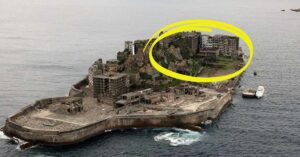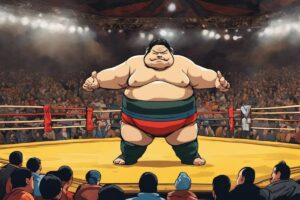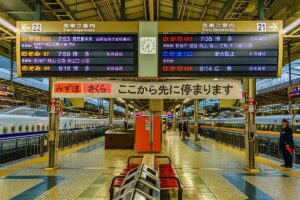If you’ve ever visited Japan or seen photos, you’ll have no doubt seen lots of different lanterns. Lanterns have a long history in Japan and there are lots of different types.
In this article, we’ll explore all of the different types of Japanese lanterns and give you a little history and information about each type.
Table of Contents
Toro – Traditional Japanese lanterns
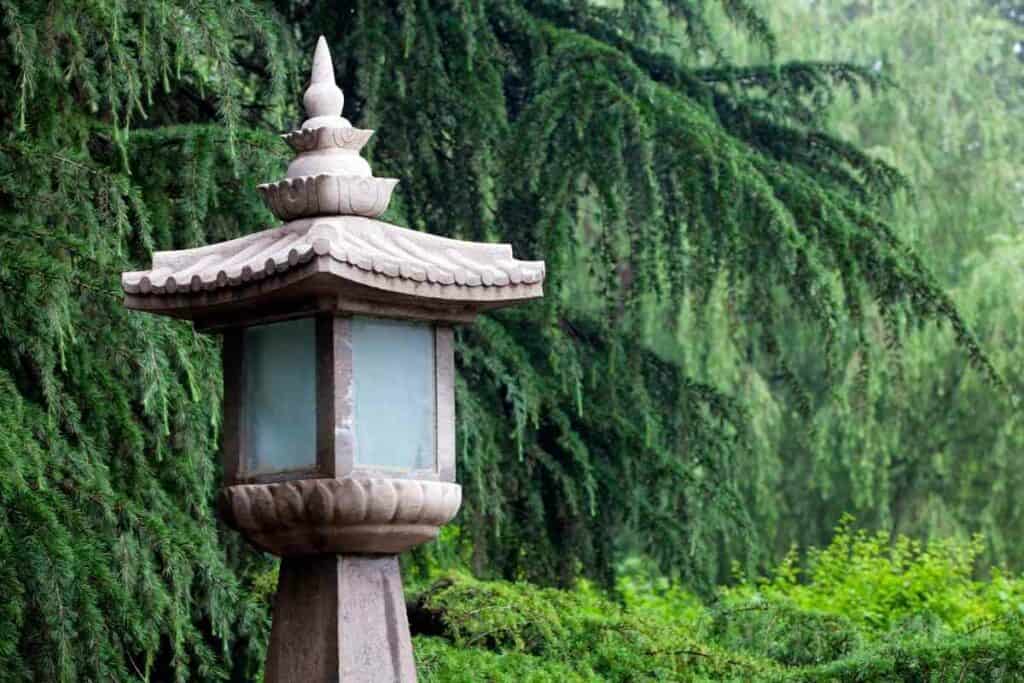
The first Japanese lanterns were made out of wood, stone, or metal. There were originally brought over from China and you can still see similar lanterns in Buddhist temples and Chinese gardens too. You’ll also find similar lanterns in Vietnam or Korea, but you’d have to look a little harder in those countries.
Originally, the toro were placed inside Buddhist temples. They would frame pathways and illuminate the area. Commonly regarded as offerings to Buddha, they also were used in Japanese homes and Shinto shrines between the 8th and 12th centuries.
Today, Toro lanterns continue to exist. You’ll find them in gardens, parks, and temples in Japan. If you want to find the oldest ones, you’ll have to head to Nara.
Here, you’ll find Toro lanterns made from stone and bronze have existed since the 8th century during the Nara period.
What do Toro lanterns look like?
There are different types of Toro. You will find floor lanterns, hanging lanterns, buried lanterns, and pedestal lanterns. Some are made of stone, while others are of bronze.
The original Toro lanterns were designed to embody Buddhist cosmology’s five elements. The part of the statue closest to the ground would represent the earth, then the part on top of that would represent water.
The part of the lantern that encased the light would represent fire, and the two sections closest to the sky would represent the spirit and the air.
Essentially, these lanterns were a metaphor for how transient life is: when we die, our bodies return to the origins of these elements.
Notable lanterns
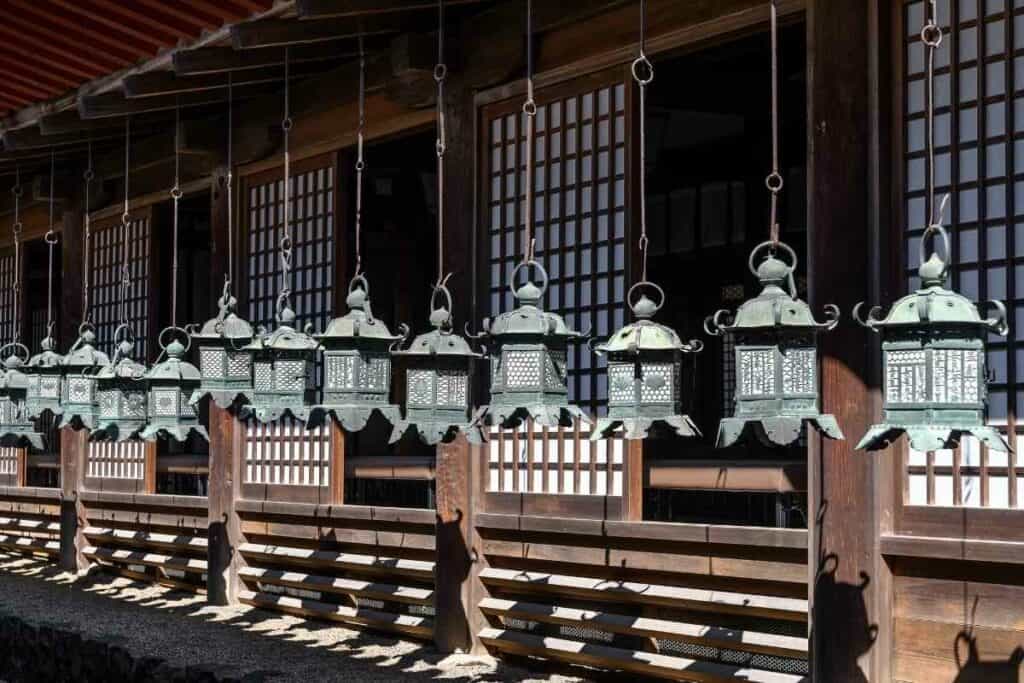
There are many famous lanterns in Japan. Notable bronze lanterns can be found at Horyu-jo, Todai-ji (an 8th century National Treasure), Nikko Tosho-gu, and at Itsukushima Shrine.
As for stone statues, a famous one can be found at Jochi-ji (a pagoda-shaped one) and another one in a beautiful setting can be seen in Shinjuku Gyoen, Tokyo.
If you’re looking for old lanterns, Katsuragi in the Nara prefecture is home to a Buddhist temple called Taima-dera. In this temple is a primitive stone lantern.
It is predicted to have been created at some time between 710 and 974 (the Nara period). For lanterns from the following era (the Heian period from 794 to 1185), you’re best visiting Kasuga-taisa, which is a Shinto shrine in Nara.
It contains many bronze and stone lanterns from this period and they’re enveloped in beautiful surroundings.
Japanese Paper Lanterns
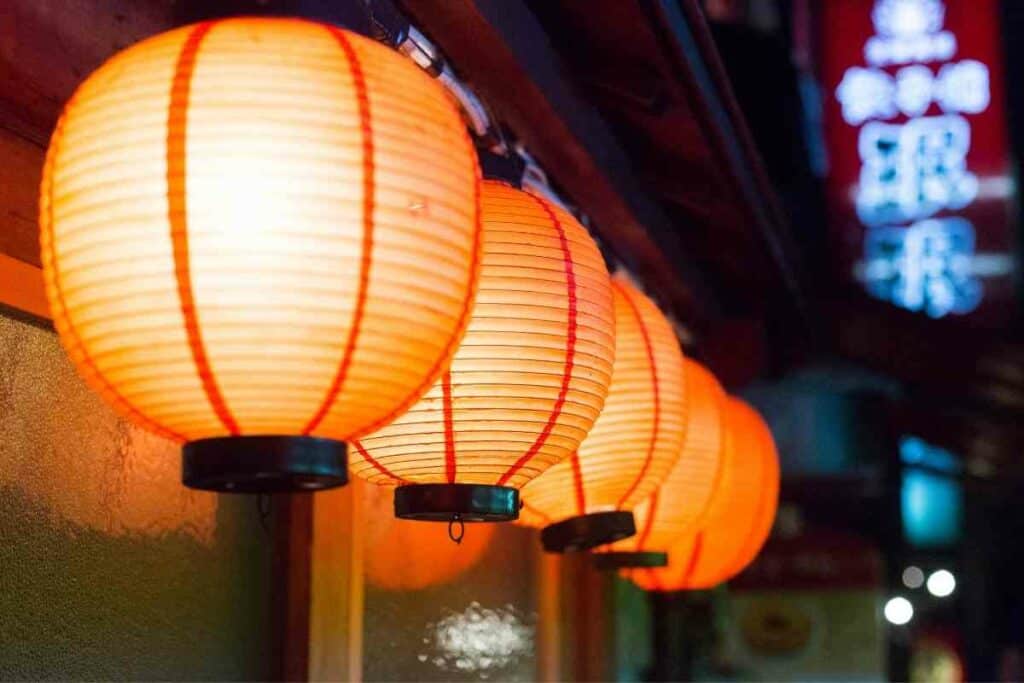
Before electricity was invented, it was common to see Japanese people using paper lanterns as lights during darkness.
You’ll still see paper lanterns being used these days but they’re not so much of a necessity and more of a decoration now.
There are lots of different types of Japanese lanterns made of paper. One type is Akachochin. This means “red lantern”. You’ll find these lanterns in izakaya, which are informal bars that serve snacks and alcoholic drinks.
2. Chochin
The Japanese word Chochin refers to a specific type of lantern made of paper. Chochin have been made in Japan since the 11th century. They are used for decorations in businesses, temples, and shrines.
What’s great about chochin is that they’re made to be folded flat, which shows just how forward-thinking Japanese designers were as far back as 1000 years ago.
These lanterns are made from bamboo that’s coiled into a spiral shape. They’re usually hung by a handle or hook at the top.
Nowadays, they have electric lights inside but traditionally, they were lit with a cotton wick that soaked up oil.
3. Ariake Andon
Not all Japanese lanterns were made for the outdoors. Ariake Andon lanterns were cube-shaped lanterns that were used in the home as a nightlight. Their name means “daybreak lantern”. These might actually be the cause of more deaths than samurai swords!
These were made from wood and paper and lit with oil. Candles would have been too expensive back then; oil was much cheaper.
4. Oki Andon
The Oki Andon is another indoor paper lantern. These were used mainly for nighttime activities like sewing and reading. They are typically square or rectangular with a carry handle at the top and a draw at the bottom for easy refilling of the wick.
5. Enshu Andon
These types of Japanese lanterns are tube-shaped. To refill the wick, there is no drawer but a partial opening instead to allow for easy refilling.
Toro Nagashi Festival
As we’ve seen, there are lots of iconic types of Japanese lanterns, and what would make them even grander? A festival dedicated to them!
The Japanese lantern festival Toro Nagashi is one of the most important events in the Japanese calendar. It’s celebrated almost as much as New Year’s Eve and is a celebration throughout the whole country.
Read later – 10 Best New Year Celebrations In Japan
For three consecutive days in August, Japanese people set floating lanterns off at dusk in order to commemorate the souls of the dead. The festival began as a traditional way of celebrating the Buddhist festival of O-bon.
Many Japanese people believe that their dead relatives’ souls return home for this short period. It’s a time for family and most people take holidays off work to come together and light their toro to thank their ancestors for their protection and visit.
The idea behind the lanterns is that people’s ancestors will be able to find their way home easily. Families then gather to the graves of their relatives, leave food offerings and talk to them about what’s been happening that year, new jobs, new babies, marriages, etc.
The Festival of Recovery
You might see or hear Toro Nagashi being called The Festival of Recovery. This is because of its sad origins. The first large-scale Toro Nagashi took place in 1946 to commemorate all of the lives lost during World War II.
This is also why you’ll see bigger events at Hiroshima as ten thousand toros are put out onto the water.
In Tokyo, too, the Sumida River has a large Toro Nagashi gathering to celebrate people who lost their lives in the Great Kanto earthquake in 1923.
Visitors and Toro Nagashi
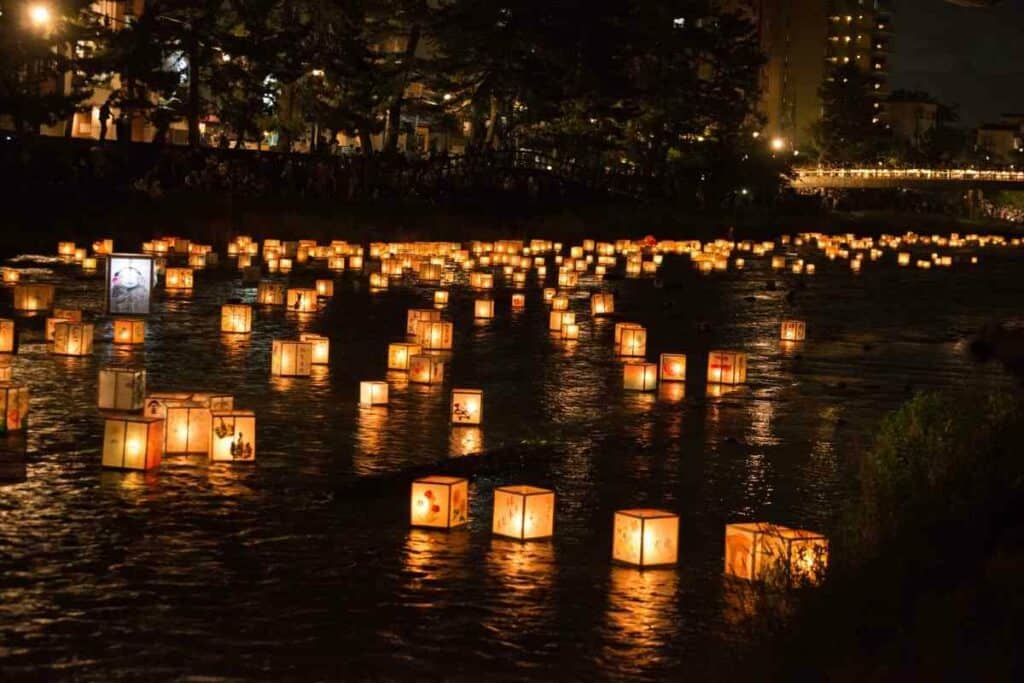
Toro Nagashi is free, which means it’s an excellent festival for everyone to get involved in. You don’t just have to watch either.
Visitors can take part by bringing their own lanterns or buying ones that are for sale. These cost around $13 each. You can decorate them with wishes and pictures.
People are encouraged to arrive early so as to avoid any long queues. When you reach the water’s edge, your lantern will be set alight by a volunteer and you’re free to place it on the water to float away.
As well as the lanterns, there is always O-bon dancing and live music. The dancing is mesmerizing and certainly worth sticking around for.
Chikuraku Festival
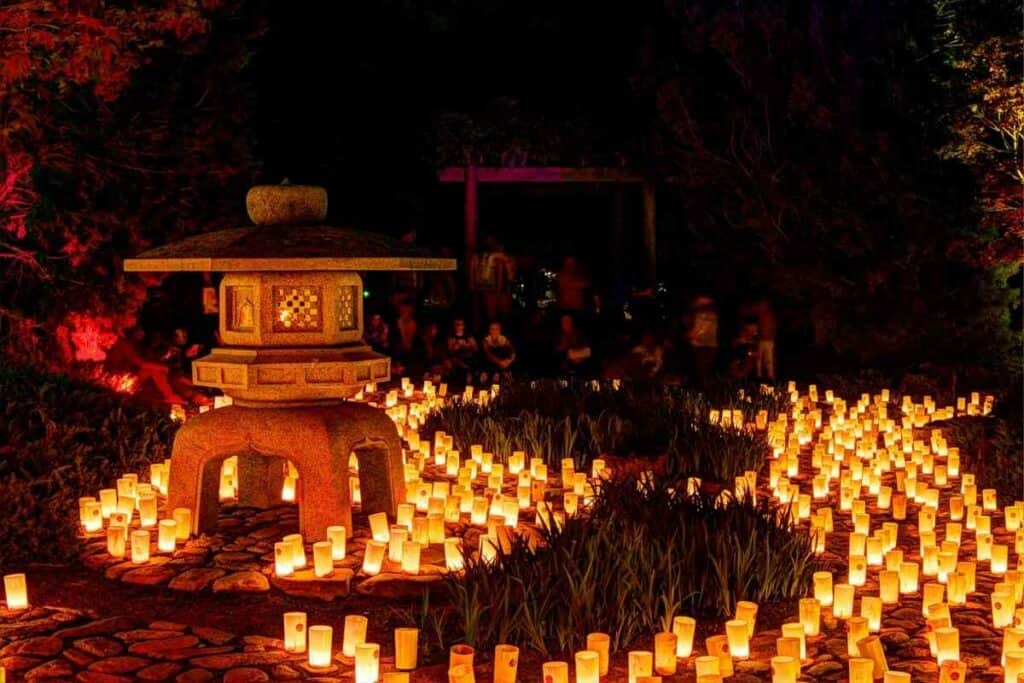
Another type of Japanese lantern was created especially for the Chikuraku Festival, which takes place for three days in the third week of November each year in Taketa City, Oita, Kyushu.
Each day, thousands of people gather at dusk to see the 20,000 bamboo lanterns alight.
As festivals go, Chikuraku and its lanterns have only been around twenty years. This festival isn’t based on ancient rituals or traditions, it became an event due to economic changes.
Around fifty years ago, the demand for bamboo peaked in Taketa. With cheaper alternatives like plastic, the bamboo forests were at risk of falling into disrepair.
Rather than allow Taketa’s forests to rot, the city decided to keep felling the bamboo and use it in a lantern festival each year.
The first year, there were just 400 lanterns, but this has now grown to 20,000, which is almost as many lanterns as inhabitants of the city!
Final thoughts
These days, many people use plastic or glass lanterns instead of paper ones as the paper ones don’t last as long.
Paper lanterns are more symbolic in Japan, but they’re not really used other than for decoration now. Even if you don’t live in Japan, many international stores sell Japanese-style lanterns as they’re such beautiful lamps.
The most popular types of Japanese lanterns outside of Japan are moveable lanterns, hanging lanterns, or stone lanterns for the garden. It’s even possible to find sellers listing authentic Japanese lanterns for sale internationally – there’s certainly a market for them.
Be prepared to pay a higher price for these compared to a replica or a Japanese-style lantern.
When you visit Japan, it’s certainly worth looking out for some of the notable bronze or stone lanterns of the past.
And if you make it at the right time of year, you’ll see some amazing lantern festivals too.
- The Forbidden Japanese Island That Will Give You Nightmares
- Miss Japan Forced to Wear Sailor Moon Costume Since Childhood: Claims It’s the Secret to Her Success
- Essential Guide to Japan VPN: Secure Access and Privacy for Travelers
- Sumo Wrestler Suit for Adults by TOLOCO: Best Sumo Suit?
- Eki Stamp Book (Gotta Collect Them All!)
- Explore the Fascinating World of Japanese Rubik’s Cubes

